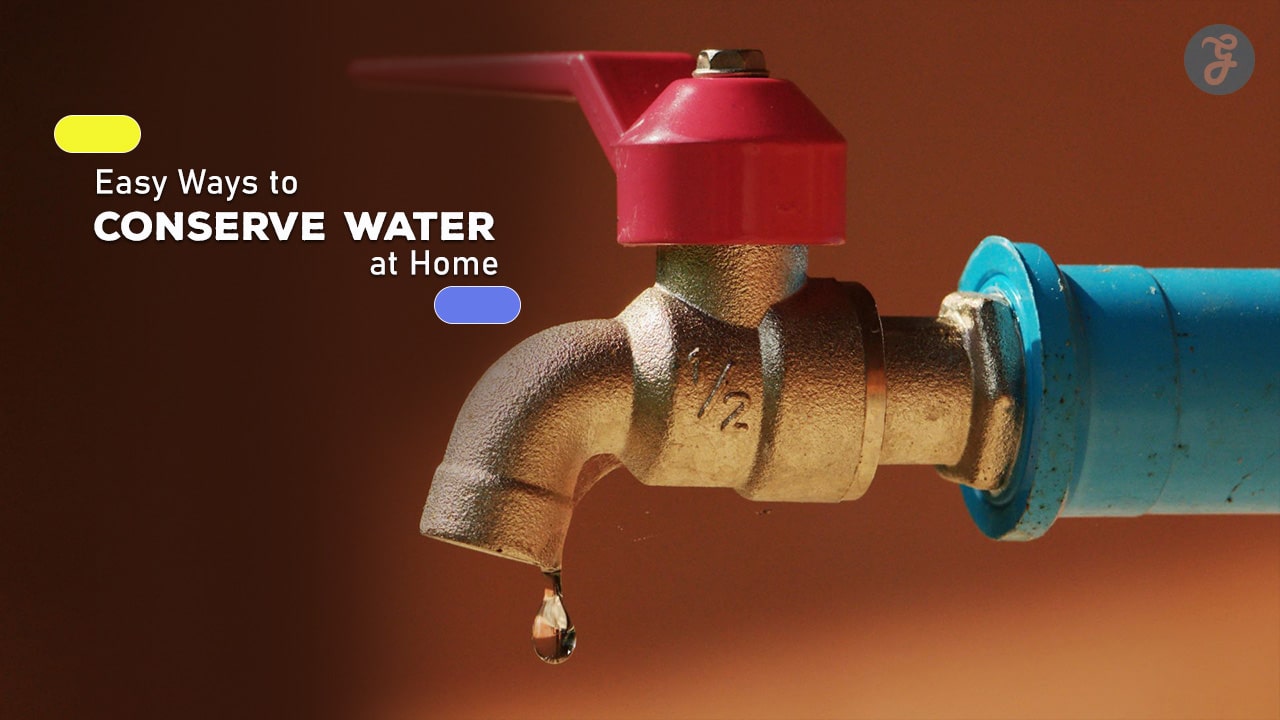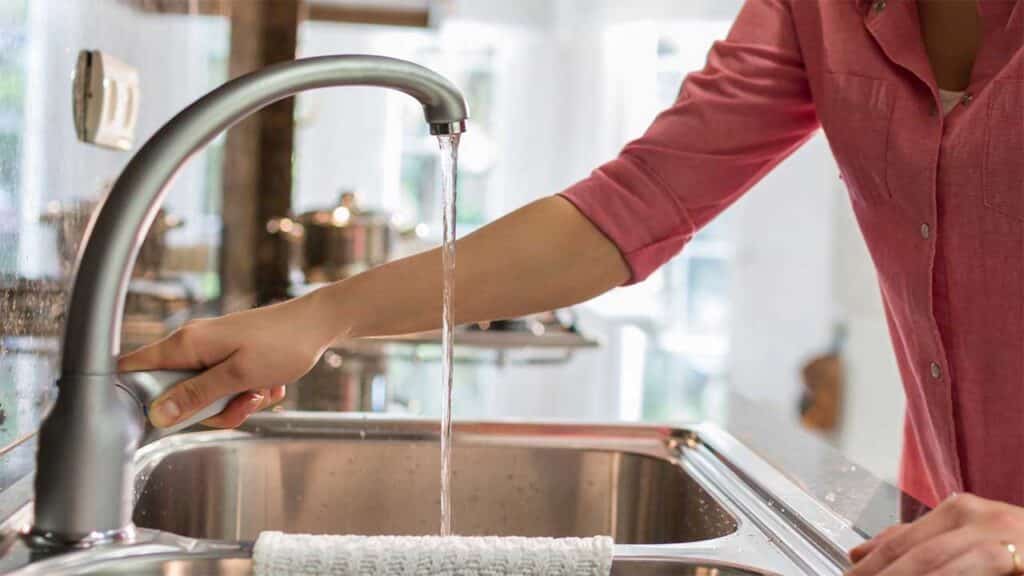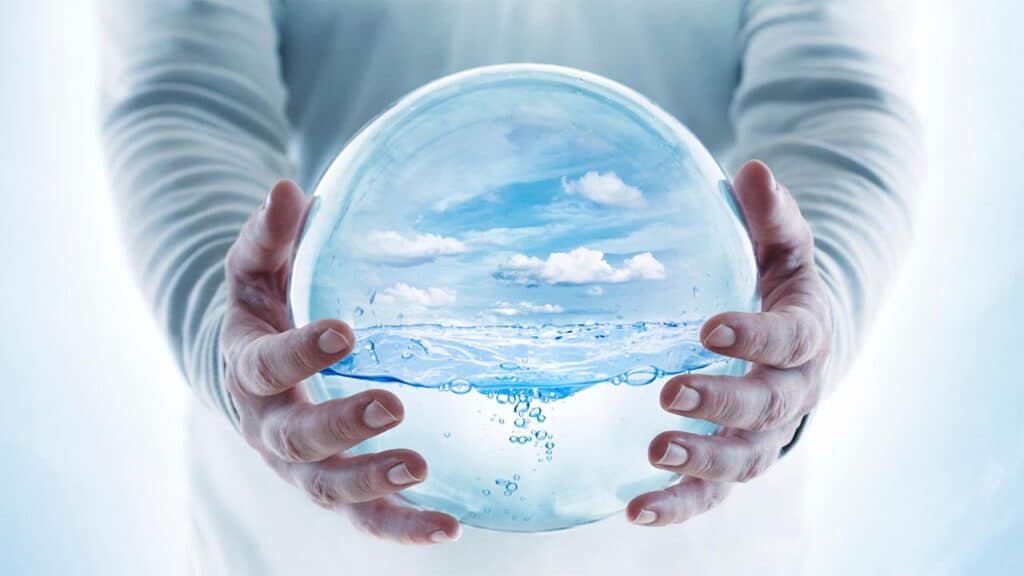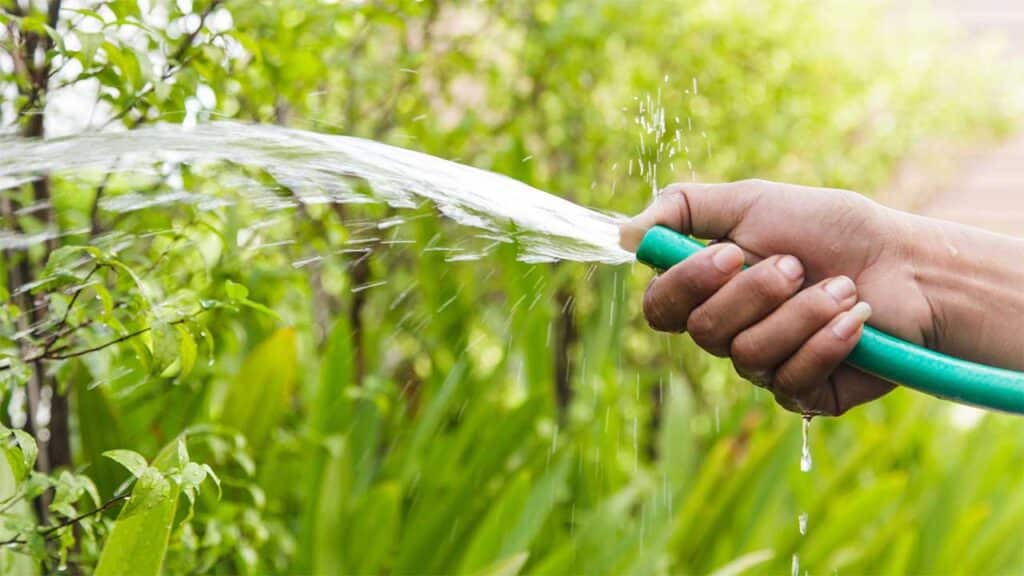Water is one of our most valuable resources, and conserving it has never been more important. With growing populations, climate change, and increasing demand for water, many regions are facing water scarcity. Fortunately, there are many simple, effective ways to conserve water at home.
These small steps can make a significant impact—not only on your water bill but also on the environment.
In this article, we’ll explore 20 easy ways to save water around the house. By connecting with sustainable habits and making it a fun, competitive challenge within your family or community, you can make water conservation an engaging and impactful practice.
1. Fix Leaks Immediately
Even minor leaks can lead to significant water waste over time.
Water leaks are one of the most common—and easily fixable—sources of water waste in the home. A dripping faucet can waste up to 3,000 gallons of water per year, while a leaking toilet can waste up to 200 gallons per day.
Tips:
- Faucet Leaks: Regularly check for drips around faucets, showerheads, and pipes. Tighten any loose fixtures and replace worn-out washers or seals.
- Toilet Leaks: To check for toilet leaks, add a few drops of food coloring to the toilet tank. If the color seeps into the bowl without flushing, you have a leak.
- Water Meter Test: To detect hidden leaks, turn off all water appliances and check your water meter. Wait two hours without using any water and check again. If the meter has moved, there’s a leak somewhere in your system.
- Call a Professional: For persistent or serious leaks, consider hiring a plumber. While it may cost money upfront, fixing leaks can prevent higher water bills and potential water damage.
2. Install Low-Flow Fixtures
Low-flow fixtures can reduce water usage by up to 50%, making them one of the most effective ways to save water.
Low-flow fixtures include showerheads, faucets, and toilets that use significantly less water than traditional models. Installing these fixtures is a simple, cost-effective way to make your home more water-efficient.
Tips:
- Low-Flow Showerheads: A standard showerhead uses 5 gallons of water per minute, while low-flow models use 2.5 gallons or less. Installing a low-flow showerhead can save over 7,000 gallons of water per person each year.
- Faucet Aerators: Installing faucet aerators on kitchen and bathroom sinks can reduce water flow while maintaining pressure. This is an inexpensive way to cut water usage by as much as 40%.
- Rebates and Incentives: Many cities and water districts offer rebates or discounts for homeowners who install water-saving fixtures. Check with your local water authority to see if you qualify.
3. Use a Water-Efficient Dishwasher
A modern dishwasher uses less water than hand-washing dishes and can save you hundreds of gallons of water per year.
It might seem counterintuitive, but using a dishwasher—especially a newer, water-efficient model—can save more water than hand-washing. Older dishwashers use up to 10 gallons per cycle, while modern machines can use as little as 4 gallons.
Tips:
- Full Loads Only: Always run the dishwasher with a full load to maximize water efficiency. Running half-empty loads wastes both water and energy.
- Skip the Pre-Rinse: Modern dishwashers are designed to handle food residue, so there’s no need to pre-rinse dishes. This can save a significant amount of water.
- Eco-Friendly Settings: Use the energy-saving or eco mode on your dishwasher, which reduces both water and energy consumption. Many dishwashers have settings that use less water for lightly soiled dishes.
4. Shorten Shower Time
Reducing your shower by just a couple of minutes can save as much as 5 gallons of water per minute.
Long showers are one of the biggest contributors to household water waste. The average American shower lasts 8 minutes and uses around 17 gallons of water. By cutting shower time, you can make a big impact on your water use.
Tips:
- Set a Timer: Use a shower timer to keep track of how long you’re in the shower. Aim for 5-minute showers to reduce water use.
- Military Shower: Consider adopting a “military shower” approach, where you turn off the water while soaping up or shampooing and then turn it back on to rinse.
- Make it a Competition: Challenge family members to see who can take the shortest showers without sacrificing cleanliness. The winner can be rewarded with a fun prize.
5. Turn Off the Faucet When Brushing Teeth or Shaving
Turning off the faucet while brushing your teeth or shaving can save up to 4 gallons of water per minute.
Leaving the faucet running during routine tasks like brushing teeth or shaving is a common source of water waste. A faucet left running while you brush your teeth can waste over 200 gallons of water per month.
Tips:
- Simple Habit Change: Turn off the faucet while brushing and only turn it back on to rinse. Do the same while shaving by filling the sink with a little water to rinse your razor.
- Add a Reminder: Place a small sticker or reminder on the mirror or faucet to help reinforce this habit.
- Teach Kids Early: Make it a game for kids to see how much water they can save by turning off the tap during these activities.
6. Collect and Reuse Greywater
Greywater, or water from sinks, showers, and washing machines, can be reused for non-potable purposes like watering plants.
Reusing greywater is an excellent way to reduce water waste. Although it’s not suitable for drinking, greywater can be used for tasks such as flushing toilets, watering lawns, or cleaning outdoor surfaces.
Tips:
- Collect Shower Water: Place a bucket in the shower to collect water while waiting for it to heat up. This water can then be used for plants or other cleaning tasks.
- Greywater Systems: Consider installing a greywater recycling system to redirect water from sinks, showers, or laundry for irrigation or flushing toilets.
- Safe Reuse: Ensure that greywater is used safely by avoiding plants that produce food or flowers meant for human consumption.
7. Install a Dual-Flush or Low-Flow Toilet
Toilets account for nearly 30% of household water use, but dual-flush or low-flow models can significantly reduce this amount.
Standard toilets use 3-7 gallons per flush, while dual-flush toilets use as little as 0.8-1.6 gallons. Installing a dual-flush or low-flow toilet can save thousands of gallons of water each year.
Tips:
- Install a Dual-Flush Kit: If replacing your toilet isn’t an option, install a dual-flush conversion kit. This is an inexpensive and simple DIY project that allows you to control how much water you use per flush.
- Replace Older Toilets: If your toilet is more than 10 years old, consider upgrading to a WaterSense-labeled model, which uses less water without compromising performance. Flush Less Frequently: For liquid waste, flush less frequently to conserve water. Some households adopt a “if it’s yellow, let it mellow” policy to reduce unnecessary flushing.
8. Use Rainwater Harvesting Systems
Rainwater harvesting systems allow you to collect and reuse rainwater for tasks like watering the garden or washing the car, reducing your reliance on municipal water supplies.
Rainwater harvesting is an eco-friendly way to conserve water for outdoor uses. A rain barrel connected to your gutter system can collect hundreds of gallons of water during a rainy season, which can then be used for various tasks around the house.
Tips:
- Install a Rain Barrel: Place a rain barrel beneath a gutter downspout to collect runoff from your roof. This water can be used for watering plants, cleaning patios, or even washing cars.
- Maintenance: Regularly clean your gutters and barrel to prevent debris buildup, which could clog the system or attract pests.
- Rebates and Incentives: Some municipalities offer rebates for installing rain barrels or rainwater harvesting systems. Check with your local water authority for available programs.
9. Use a Broom Instead of a Hose for Outdoor Cleaning
Using a hose to clean driveways, sidewalks, or patios can waste hundreds of gallons of water. Sweeping or using a blower is a more water-efficient method.
Cleaning outdoor spaces with a hose might seem convenient, but it’s incredibly wasteful. A garden hose uses around 10 gallons of water per minute, which can add up quickly.
Tips:
- Sweep or Use a Blower: Use a broom or leaf blower to clean outdoor areas instead of hosing them down. This is not only water-efficient but can also be faster.
- Spot Clean: For particularly dirty areas, use a bucket of water and a brush to scrub away grime instead of spraying the entire area with a hose.
- Teach Kids: Make sweeping the driveway a chore for kids, turning it into a fun task to help conserve water.
10. Water Lawns and Gardens
Watering your lawn and garden efficiently can save thousands of gallons of water per year, while also promoting healthier plant growth.
Many people overwater their lawns and gardens, which not only wastes water but also harms plants. Most lawns only need about 1 inch of water per week, including rainfall.
Tips:
- Water Early or Late: Water your lawn in the early morning or late evening to reduce water loss from evaporation. By doing this, you can prevent the water from evaporating in the heat of the day.
- Drip Irrigation: Consider installing a drip irrigation system or soaker hoses to deliver water directly to the root zone of plants, which reduces waste and promotes healthier growth.
- Use a Rain Gauge: Place a rain gauge in your yard to track how much water your lawn is receiving from both rain and irrigation. This can help you avoid overwatering.
11. Mulch Around Plants
Mulching your garden helps retain soil moisture, reducing the need for frequent watering and promoting plant health.
Mulch acts as a barrier that prevents water from evaporating from the soil, keeping it moist for longer periods. This means less frequent watering is required, saving both time and water.
Tips:
- Apply Thick Mulch: Apply a 2-3 inch layer of mulch around plants, but avoid piling it up directly against the stems or trunks to prevent rot.
- Choose Organic Mulch: Organic mulches, such as wood chips, bark, or straw, decompose over time, adding nutrients to the soil while also conserving moisture.
- Reapply as Needed: Refresh the mulch layer every year or after heavy rains to maintain its water-saving benefits.
12. Use a Water-Saving Showerhead
Installing a water-saving showerhead can reduce water usage by 40%, without sacrificing water pressure or comfort.
A standard showerhead uses around 5 gallons of water per minute, while a water-saving model uses 2.5 gallons or less. This simple upgrade can save thousands of gallons of water each year.
Tips:
- Easy Installation: Most water-saving showerheads are easy to install without the need for professional help. They typically screw onto the existing shower arm in just a few minutes.
- WaterSense Label: Look for WaterSense-labeled showerheads, which are certified to use less water while maintaining strong pressure.
- Double the Savings: Combine a water-saving showerhead with shorter shower times to maximize water conservation.
13. Wash Clothes Efficiently
Washing full loads of laundry is one of the simplest ways to conserve water. By running fewer, fuller loads, you can save both water and energy.
Washing machines use a lot of water—about 40 gallons per load for a top-loader and 25 gallons for a high-efficiency model. By washing full loads, you make the most of the water being used.
Tips:
- Wait for Full Loads: Don’t run the washing machine for small loads. Wait until you have a full load to maximize efficiency.
- Use Cold Water: Wash clothes on the cold water setting whenever possible. This not only conserves energy but also saves water by skipping the need to heat it.
- Upgrade to Energy-Efficient Models: If your washing machine is old, consider upgrading to a high-efficiency model, which uses less water and energy per load.
14. Limit Outdoor Water Use
Outdoor water use, particularly for lawns and gardens, can account for 30-60% of residential water consumption in the summer. Reducing this can have a significant impact.
During the summer, water usage spikes due to increased lawn and garden watering. Limiting outdoor water use is one of the most effective ways to conserve water at home.
Tips:
- Smart Irrigation Systems: Install smart irrigation controllers that adjust the watering schedule based on weather conditions, reducing unnecessary watering.
- Water Plants Wisely: Water plants deeply but less frequently to encourage deep root growth. This not only conserves water but also results in healthier plants.
- Water Early or Late: Always water your lawn or garden in the early morning or late evening when the sun is lower to minimize evaporation.
15. Use a Pool Cover
Pools can lose large amounts of water through evaporation. Using a pool cover can reduce evaporation and the need for refilling.
Evaporation from pools can lead to significant water loss, especially during hot summer months. Covering your pool when it’s not in use can drastically reduce this loss.
Tips:
- Use Solar Covers: Solar pool covers not only reduce water loss but also help keep the water warm, reducing the need for heating.
- Cover When Not in Use: Make it a habit to always cover your pool when it’s not being used, especially on hot days.
- Pool Maintenance: Keep your pool and filtration system well-maintained to minimize the need for refilling due to leaks or evaporation.
16. Insulate Pipes
Insulating hot water pipes reduces the amount of water wasted while waiting for water to heat up, as well as saving energy.
In many homes, water is wasted as we wait for it to get hot. By insulating your pipes, you can reduce the time it takes for hot water to reach your taps, which conserves water and energy.
Tips:
- Insulation Sleeves: Purchase inexpensive pipe insulation sleeves from your local hardware store. They are easy to install and can quickly reduce water waste.
- Focus on Hot Water Pipes: Insulate the pipes that deliver hot water to your faucets and showerheads. This will help hot water arrive faster.
- Double Benefits: Insulating pipes not only saves water but also cuts down on energy bills by keeping the water in the pipes hotter for longer.
17. Use a Car Wash That Recycles Water
Washing cars at home can waste up to 100 gallons of water per wash, but using a commercial car wash that recycles water can save a significant amount of water.
Washing your car at home typically uses much more water than you realize. Many commercial car washes are more water-efficient because they recycle the water used during the wash process.
Tips:
- Commercial Car Wash: Take your car to a commercial car wash that recycles water. This is often more water-efficient than washing at home.
- Bucket and Sponge: If you prefer to wash your car at home, use a bucket of water and a sponge instead of running the hose. Turn off the hose between rinses to prevent waste.
- Waterless Car Wash: Consider using a waterless car wash product, which cleans and polishes your car without the need for water.
18. Adjust Sprinkler Systems
Sprinklers that aren’t properly adjusted can waste large amounts of water by watering sidewalks or driveways instead of plants.
Sprinkler systems can be an efficient way to water your garden or lawn, but only if they’re set up correctly. Misaligned or broken sprinklers often water more than just plants, wasting water on sidewalks, driveways, and other non-essential areas.
Tips:
- -Adjust Sprinkler Heads: Regularly check your sprinkler heads to ensure they’re watering the lawn or garden, not hard surfaces like sidewalks or driveways.
- Smart Irrigation: Install a smart irrigation system that adjusts watering schedules based on the weather. This reduces unnecessary watering and can save a lot of water during rainy periods.
- Install a Rain Sensor: Rain sensors can automatically shut off your sprinkler system when it’s raining or the ground is already wet, preventing overwatering.
19. Choose Drought-Resistant Plants
Drought-tolerant plants require less water and are better suited to regions with limited rainfall.
Choosing the right plants for your garden can make a significant difference in your water usage. Drought-resistant plants are adapted to thrive with minimal water, making them ideal for water-conscious gardeners.
Tips:
- -Native Plants: Opt for native plants that are well-suited to your region’s climate and water conditions. These plants generally require less water and are more resilient to local weather patterns.
- Group Plants by Water Needs: Group plants with similar water needs together to avoid overwatering some while under-watering others.
- Mulching: Use mulch around drought-tolerant plants to help retain soil moisture and further reduce the need for watering.
20. Reuse Water from Cooking
Water used in cooking, such as boiling pasta or washing vegetables, can be repurposed for other tasks like watering plants.
Cooking uses a surprising amount of water, but much of it can be repurposed for other uses around the house. Instead of pouring cooking water down the drain, save it for tasks like watering plants or cleaning.
Tips:
- Reuse Pasta Water: Once the water has cooled, use it to water plants. It’s rich in nutrients that can be beneficial to non-edible plants.
- Washing Fruits and Vegetables: Collect the water used to wash fruits and vegetables and reuse it for cleaning floors or watering your garden.
- Safety First: Avoid using salty or oily water for plants, as these substances can harm the soil and root systems.
Conclusion
Water conservation is crucial not just for your household but for the planet. By adopting these 20 easy water-saving habits, you can make a big difference in reducing your home’s water consumption.
Make it a fun family challenge by seeing who can save the most water or adopt the most water-efficient habits, turning conservation into a rewarding game.
Whether it’s fixing leaks, shortening showers, or collecting rainwater, every small effort counts. Together, these actions will help conserve water, lower utility bills, and contribute to a more sustainable future.
Remember, every drop counts! So, connect with these habits and compete to make water conservation a fun and impactful part of your daily life.













































